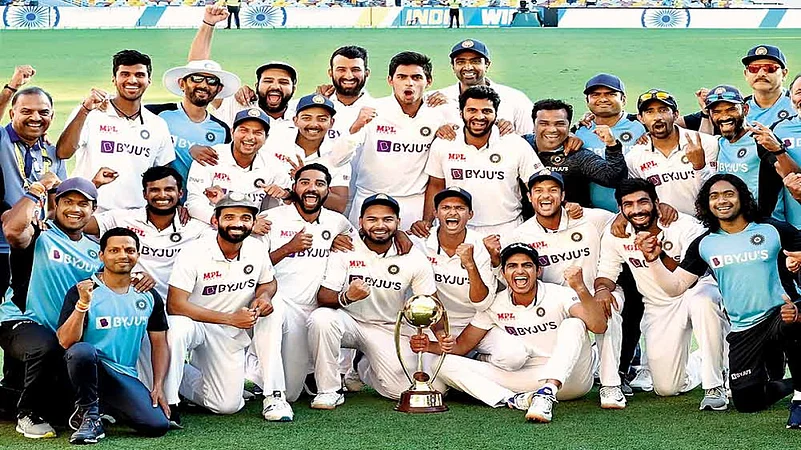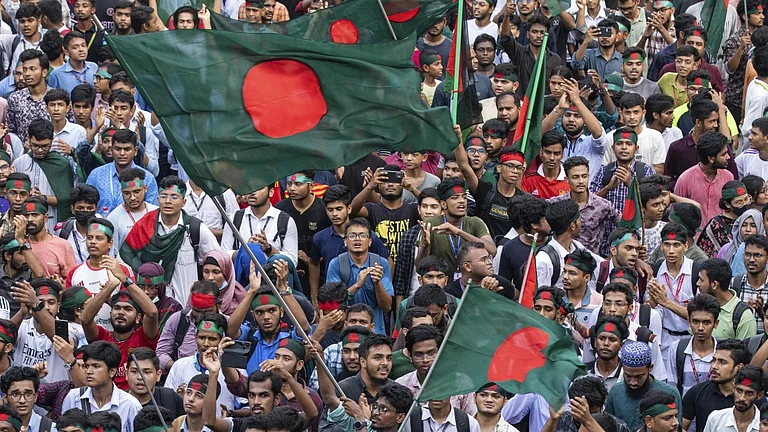From a tangled stream of events providing context and background, benchmark episodes stand out, cornerstones of achievement that, in hindsight, provide points of contrast and comparison with the past and the future. After Australia’s series loss to India on the 2018 tour Down Under—a stand-out event itself, being India’s first Test series victory there—a lot was made of the absence of David Warner and Steve Smith. Yet, that’s an amusingly ironical afterthought now, after this most astonishing of turnarounds, crowned by the series-clinching victory in Brisbane, a match won unprecedentedly with the absence of seven front-line players. ‘Grit’, ‘determination’, ‘fortitude’, ‘resilience’ are, after all, hackneyed fancy words to be employed by hacks after the battle is won. The bare fact is this: a young, absurdly inexperienced Indian team has shown the world that it can cobble together a playing XI and overcome everything thrown at them, with barely 11 fit men standing at the end of it, in the most demanding environment and opposition modern cricket can muster.
The story of this series will, of course, be held aloft in the trophy room of Indian cricket, to be preserved in amber and retold to stiffen up generations of future cricketers as a sort of sporting Alamo. If good drama must have points of conflict and their heroic conquest, this series served us well: the humiliation in Adelaide, the improbable fightback in Melbourne, the jaw-dropping, blood-and-guts spirit in Sydney and then this, the sweetest of coups de grace—a bunch of youngsters new to the hard, unforgiving arena of Test cricket breaching the impregnable ‘Gabbatoir’, that slaughterhouse of visiting teams for 32 years. Through the four chapters ran a stream of injuries and drop-outs, and the drafting in of fresh innocents.
Amongst the four of them, with a combined experience of two Tests and 10 balls, Shardul Thakur, Mohammad Siraj, T. Natarajan and Washington Sundar sent down 107 overs at the Gabba and picked up 10 Australian first innings wickets. And repeated that feat in the second innings, taking 36 overs less, as Siraj picked up his first fifer in his third Test, while Thakur got four. The difference in ‘pedigree’ with Australia’s bowlers was the deepest of chasms—the Aussies had 1,033 wickets amongst them; India just 11. With every single one of their regular frontline bowlers injured, an all-new bowling attack was equal to the task thrust upon it. No other Test side in recent memory has ever faced the kind of attrition encountered by the Indians on this tour, nor have a bunch of rookies ever responded more magnificently to the challenge on one of the toughest stages of world cricket.
Put through the grind in the National Cricket Academy and other coaching centres, toughened by national tournaments and hardened into professionals in the competitive babel of the IPL, this new breed does not know stage fright; every chance of a scrimmage is to be grabbed to prove itself.
Natarajan, initially not part of Team India in any format, got on to the plane as a net bowler. Sundar was a part of the T20I side and Thakur was only in the one-day squad. All of them were expected to return after the white ball leg. That they would all end up playing in the same Test a month-and-a-half later and emerge heroes, is a fairy tale only a schoolboy would dare to dream.
In short, bloody-mindedness backed by self-belief was all they had. Like London in the Blitz, this team wouldn’t give up—they fought the Aussies on the pitch, and they fought them on the outfield; they never surrendered. As if exploits with the ball weren’t enough, Sundar and Thakur played dream innings with the bat as well, contributing unlikely 60s as they put on a record 123-run partnership. At 186 for 6, not only was every run worth its weight in gold, they were not scored with lucky agricultural hoicks—the quality of drives across the field, the selectively employed pulls and cuts, betrayed a rich seam India would mine in the future.
It has to be admitted that propitious conditions did obtain for the character, raw courage and skill by the young Indians to get full play. The Australian batting line-up is not at its strongest and, with the talismanic Smith being out-thought by India in the first two Tests, they hadn’t comparable talent to fall back on. Hurriedly drafted in, the unfit David Warner shuffled and nicked his way out in the last two Tests. Then, the catching, for both sides, was abysmal, affording batsmen many lives. Other than that one morning in Adelaide, when India was skittled out for 36, the usually excellent quartet of Pat Cummins, Nathan Lyon, Josh Hazlewood and Mitchell Starc weren’t helped by exceptionally friendly surfaces too. Even the fabled Gabba didn’t quite live up to its reputation.
Look at it every which way, it still redounds to the credit of this inspirational Indian side. At the start, with Bhuvneshwar Kumar, Ishant Sharma and Rohit Sharma unavailable, and skipper Virat Kohli returning after the first Test, it was clear that a big team effort would be needed if India were to make a match of it. What makes the story compelling is how, apart from the expected heroics from Pujara, Rahane. Ashwin, Bumrah and Jadeja, youngsters who had barely cut their teeth in international cricket stepped up. And the pundits predicted a 4-0 whitewash!
What the experts didn’t reckon with was the enormous talent pool India has at its disposal. A resource, now forged in the cauldron of the IPL, that is more battle-ready than ever before. That a team of Indian rookies stared down, then prevailed, over a full-strength Aussie team in their backyard is testimony to that. For, more than bouncy pitches and fast bowlers relentlessly exploiting them and batsmen capable of tearing apart the bowling given half a chance, an Australian tour is also about facing up to onfield aggro and sledging that can border on the obnoxious and fierce barracking by crowds not shy of indulging in racial abuse.
Interestingly, despite the furore over Sandpapergate and the sanctimonious resolve for a more ethical path for Australian cricket, nothing much has changed. In their desperation, the Aussies abused their visitors, targeting bodies instead of the stumps. Barrages of bouncers were bowled at India’s lower order batsmen even as Aussie commentators gloated in the commentary box. And yet Pujara, who was hit on the head, shoulders, arms and the body at least 10 times on the final day in Gabba, bore the blows without succumbing to the lure of the pull and the hook. When he was finally dismissed, the target, by then less than 100, was achievable for the irrepressible Rishabh Pant and the lower order. Likewise in Sydney, Ashwin and Hanuma Vihari, both injured, stood firm and saved the match. Moral, as well as sporting, defeat was writ large on every crestfallen Australian face on January 19.
That an Indian team can shrug off the absence of some of its top players, then fight tooth and nail to beat back a formidable opponent, makes this a milestone of Indian sport. A team now characterised by the fire and brimstone of Pant, Shubman Gill and Siraj, as much as by the icy calm of stand-in skipper Ajinkya Rahane. Indeed, young India could only step out of its crease and go for the jugular because of the backing by coach Ravi Shastri and Rahane.
That free pass to play up their game was evident in all that we came to admire. The fluent, free-stroking Shubman Gill characterised it at the top of the order, unfazed by pressure, all punchy drives through the covers or down the ground, topped by cuts fiercely slapped on the ground. Mind you, there would have been no series victory without his setting the tone for a chase—and not a stonewalling bid for a draw—with a galloping 91 on day five. In the middle-order, there was the fearless Pant—a full repertoire of attacking shots at the tip of his blade—who nearly turned the tables on a fidgety Australia in the fourth innings at the SCG, then finished off the job at the Gabba.
Of the bowlers, only superlative reiterations can be made here about Thakur, with his well-directed bouncers and Sundar, with his nagging line and length. Natarajan and Saini was less impressive, but Mohammed Siraj was the one bowling find. Like Cummins and Hazlewood, and like Glenn McGrath of yore, he only had eyes for the so-called ‘channel’ outside the off, rarely straying, and crucially, not carried away by the carry and bounce, something that so many Indian pacers in the past have been guilty of in Australia.
So much of what the series meant for India was encapsulated in the final day of the final Test—a gladiatorial fight to the bloody end, as the shadows lengthened imperceptibly. It’s a corner of a foreign field that’s forever Gill, Pant, Natarajan, Siraj and Thakur.
With the Border-Gavaskar Trophy retained, India now tops the World Test Championship rankings. But, in its tantalising, edge-of-the-seat spectacle, in its unique ability to emulate life itself, it is Test cricket that has been rejuvenated. For that, we owe a debt of gratitude to both teams.
***
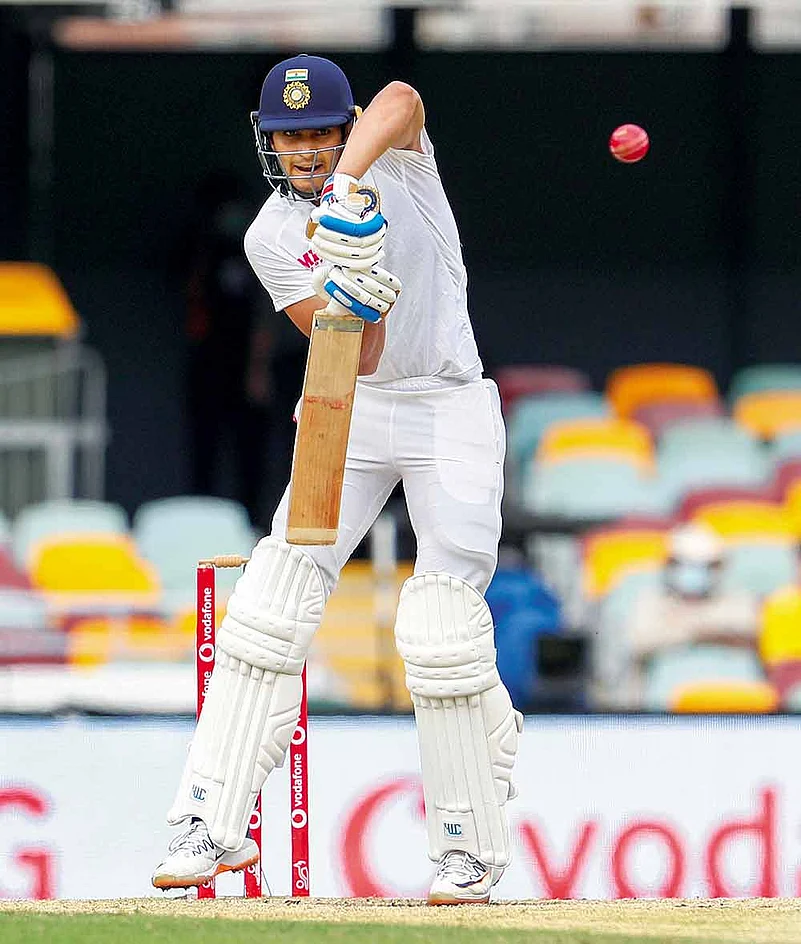
Shubman Gill
For a country pulsating with millions of cricketing dreams, finding talent is not that tough. Child prodigies are reported from every nook and cranny of the realm. But they jostle for a limited number of seats. Those who knew how to grab their chances became stars. The latest to join this ever-burgeoning list is Shubman Gill. Only 21, he’s in the elite club deemed to be the future of Indian cricket. The Punjab lad was given a chance to prove his mettle in the most hostile environment and came out with flying colours as India won back-to-back Test series in Australia. Asked to open against the greatest pace attack in cricket, Gill showed his class with crisp stroke-making: pleasing drives off the front foot; thumping cuts off the back. He got starts, and converted them into two 50-plus scores. The fourth innings 91 set up the win; it’s his defining knock till date.
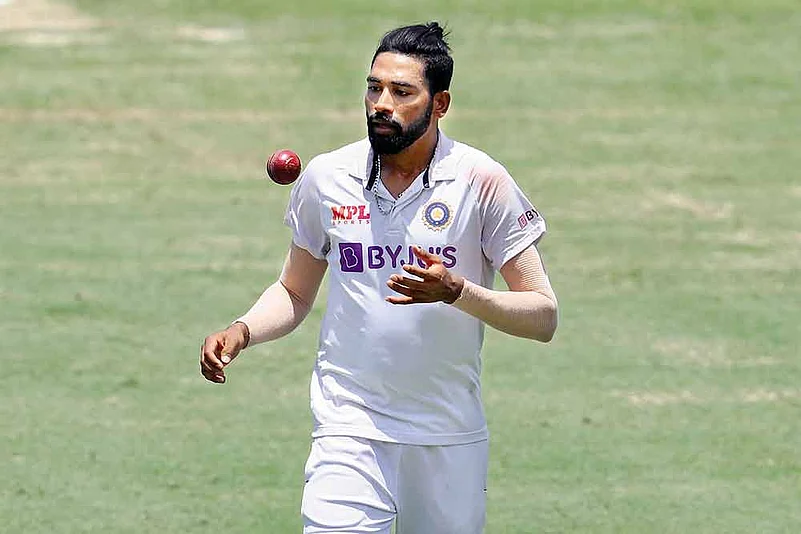
Mohammed Siraj
The best life one can lead is to live a father’s dream. Mohammed Siraj is living that life, with pain and heartbreak. But there’s also joy, knowing that he’s made a billion Indians proud, bowling his heart out, showing spirit at the most difficult of times, showing dignity and grace in the teeth of the cowardly insults chucked at him. Losing his father while on national duty, then finding himself leading a depleted attack, Siraj’s journey Down Under was the sporting equivalent of a fairy tale. The back-up bowler returned home a hero, with a bagful of wickets—each of them a stride towards the ultimate, collective achievement. After it all, the boy returned home a man.
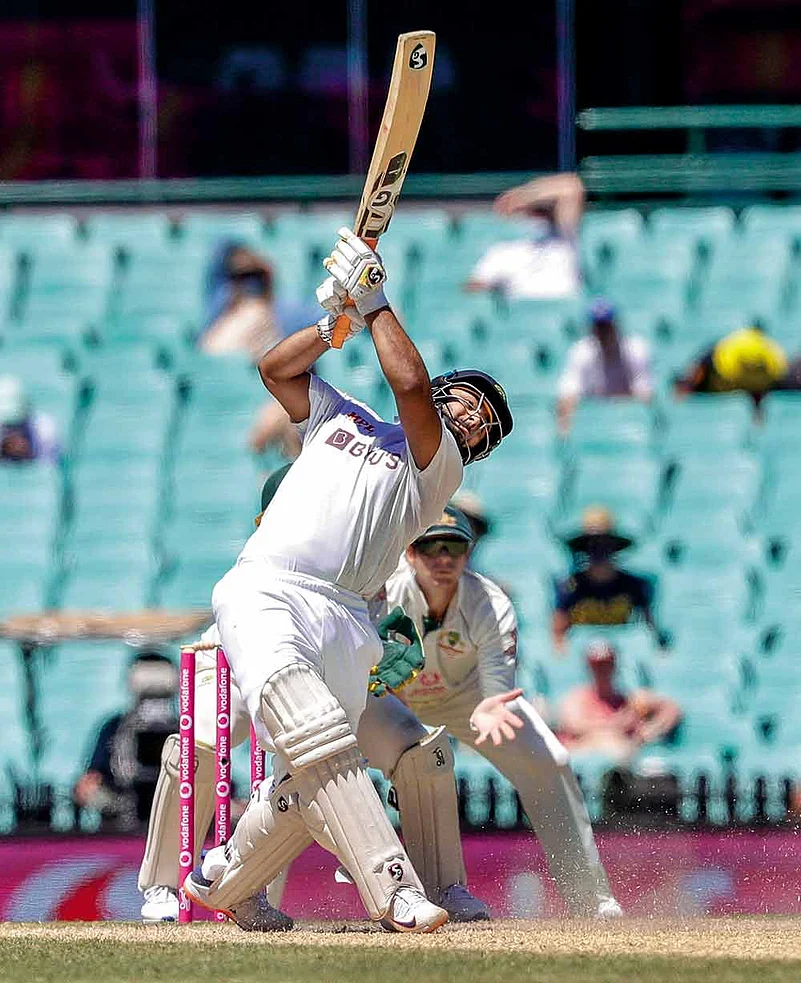
Rishabh Pant
Detractors might term him the poor man’s M.S. Dhoni and, given Pant’s periodic impetuosity, it’s understandable. But he rose to the occasion in Australia; without his 89 off 138 balls, the target of 328 runs would never be reached. The 23-year-old, often chided for privileging flamboyance over restraint, played a measured knock, shot through with tempered aggression, on an arena where the mighty Aussies were unbeaten for 32 years. The young wicketkeeper, who almost powered India to win in the previous match at the SCG, well read the stakes. But more than that, he knew how to give a fight when the chips were down. A bloodied team needed his arrogance and brute force to show it can fight back. And Pant’s chatter and imperious strokeplay were the stuff of great wicketkeeper-batsmen, Dhoni no less.
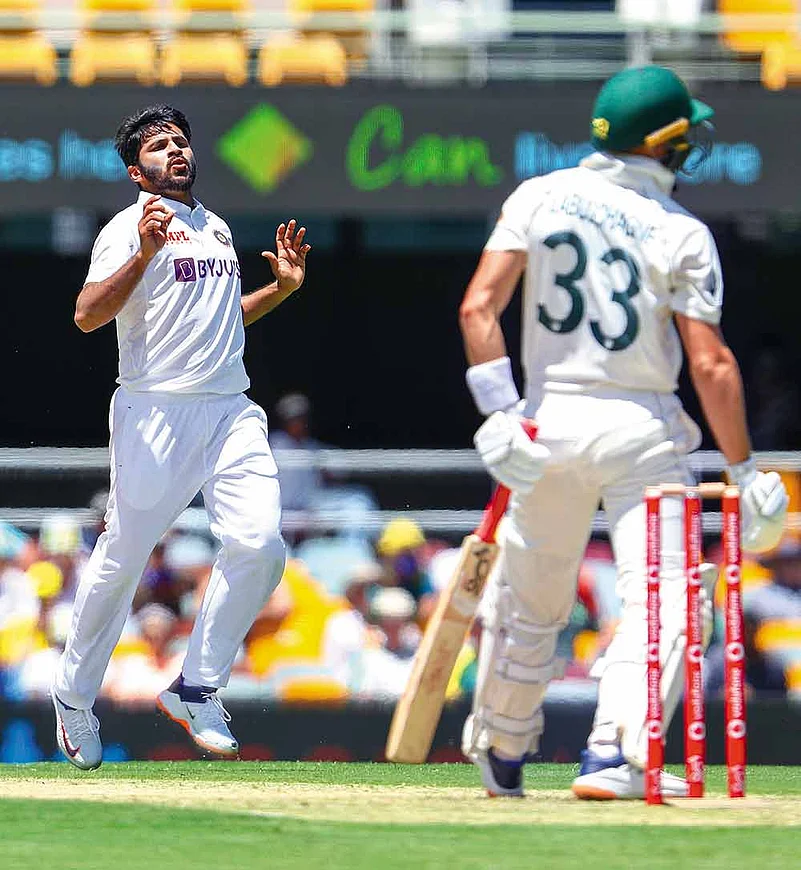
Shardul Thakur
Staying in the frame can be as important as a starring role. But only those who sit on the sidelines know the heartache. In real life these unflashy, tireless workers are called ‘unsung heroes’—the ones whose performances draw stories towards their grand denouement, the ones who won’t stop for the lion’s share of the credit. The Indian cricket team that defied all odds to conquer Australia had more such players, but none fit the role better than Shardul Thakur. Getting his first Test runs with a six, reaching his maiden fifty—a crucial one at that—with a six, intimidating Australian batsmen with the short stuff, then taking a catch to allow a teammate to complete a fifer. No, Shardul’s all-round performance is not a cameo. It deserves more than a plaque.
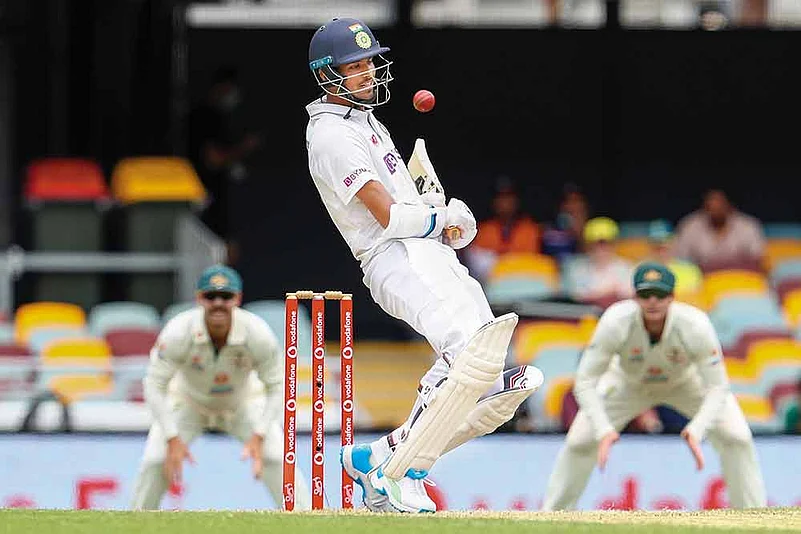
Washington Sundar
It takes more than talent to turn around when the situation is dire, then do battle. Such battles, as history has shown, need grit and determination. That’s just what Washington Sundar did against Australia at the Gabba. Filling in for a three-dimensional, sword-wielding Ravindra Jadeja, Washington led India’s fightback with a virtuoso batting performance, while bowling with precision and guile. Not many have achieved such a feat on Test debut. For the record, the 21-year-old was the first Indian in 74 years to score fifty-plus runs and take three or more wickets in his Test debut. Can it be better than this? And he also made sure to add flamboyance by hitting one of the series-defining shots: a disdainful six against Nathan Lyon, who was playing his 100th Test.
Player profiles by Jayanta Oinam
The author is a retired IAF wing commander and played Ranji Trophy for Services







